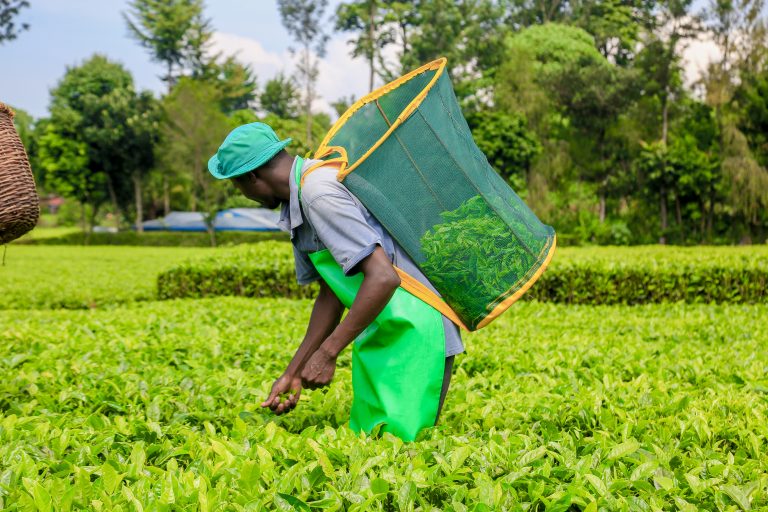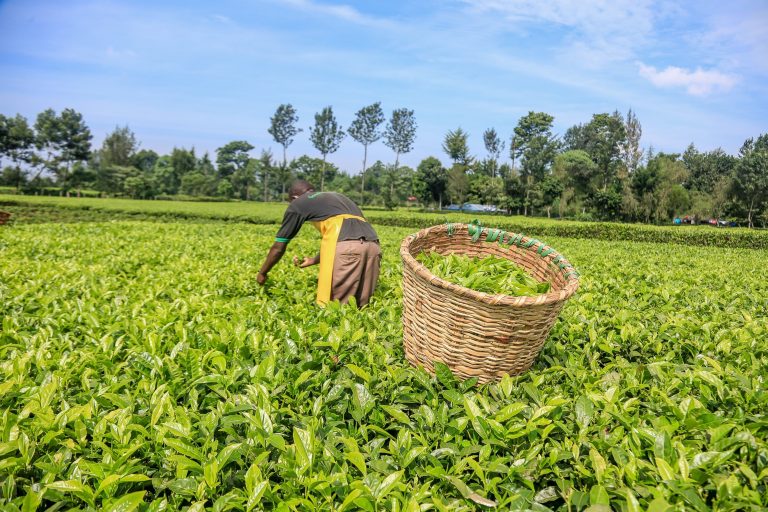In a world of cultural differences, is there one thing that can bind everyone together? Well, we all need to eat. Drink too, in fact. Interestingly enough, the drink most often chosen around the world after water, is tea. It is loved by millions from India to England, Afghanistan to Algeria – each culture with its own tradition.
Despite tea being centuries old, the world’s passion for the drink shows no sign of slowing. World consumption of tea stood at 5.80 million tonnes in 2018. It also seems that tea’s allure remains just as strong for the younger generation, who are regularly reinvigorating the industry with various types of fashionable tea products.

So just how important is tea for the world’s four largest exporters?
Kenya
While tea is largely consumed domestically in major producing countries, such as China and India, Kenya exports a large percentage of production. In 2018, Kenya was actually the largest tea exporter in the world, exporting 80 percent of tea produced. Tea is one of the country’s principal agricultural industry.
The tropical climate and rich volcanic soil in Kenya’s tea growing areas give its tea a distinct bright colour and aromatic flavour. Although Kenya mainly produces black tea, it also produces green, yellow and the prestigious white tea.
Locals enjoy their tea with milk and sugar or ‘strungi’, meaning black. Another common variation is ‘tangawizi’, served with ginger steeped with the tea leaves.
Unfortunately, like many other agricultural industries, the Kenyan tea industry is battling with the effects of climate change. An FAO report on the topic suggests that rising temperatures, unpredictable rainfall trends and increasing frequency of extreme weather events like drought and frost may be putting the industry under strain.
China
According to Chinese legend, tea was accidentally discovered in 2727 BC, when the Emperor Shen Nong was boiling water in the shade of a tea tree and a leaf blew into the pot. The emperor then fell in love with the drink that followed, and that is how tea became a common drink in Chinese culture.
China has remained the largest tea producing country, accounting for 43.2 percent of the world total with an output of 2.6 million tonnes in 2018, and it was the second largest exporter in 2018, reaching 360.7 thousand tonnes. China is also the largest consumer of tea, accounting for nearly 40 percent of world consumption.
Of the four tea sites designated by FAO as Globally Important Agricultural Heritage Systems for their contribution to maintaining and protecting the land, heritage and livelihoods, one is Japan’s Traditional Tea-Grass Integrated System in Shizuoka, a rare example of co-dependence between agricultural production and biodiversity, that has continued for over 10 000 years. Another two are in China.
The Jasmine and Tea Culture system in Fuhzou, China is special because jasmine and tea trees usually grow in different environments, but due to the diversified microclimate of the Fuhzou area, vertical landscapes allow for both. This means the tea is naturally scented with jasmine, a method developed over 1 000 years ago in the area and continued to this day.
In the Yunnan province, the Pu’er Traditional Tea Agroecosystem is the world’s largest area of tea forest plantations, established by village ancestors thousands of years ago and relying on traditional methods.
Green tea is the most popular and common tea in China, where there is a strong tea culture. In fact, tea plays a part in many important traditions, including marriage ceremonies and as formal apologies.
Sri Lanka
Tea was first introduced to Sri Lanka in 1839 when a batch of tea seeds was planted at the Royal Botanic Gardens at Peradeniya. Since then the tea industry has grown dramatically, and despite being a small country, Sri Lanka is the fifth largest tea producer but the third largest exporter in the world, reaching 282.4 thousand tonnes in 2018. Tea export earnings are a vital source of income for smallholder farmers. According to an FAO report on the tea industry, there are around 400 000 smallholders engaged in tea cultivation across the country and the tea industry supports over two million people – about one tenth of the total population in Sri Lanka.
Tea is not just an export but a key part of daily life in Sri Lanka, also served at festivals and gatherings across the country. Sri Lankans traditionally drink their tea strong and well-brewed, with milk and sugar.
India
For India, the tea industry is indispensable. According to estimates by the FAO Intergovernmental Group on Tea, this vital beverage is India’s second largest employer and provides jobs for over 3.5 million people. It is the second largest producer of tea and the second largest consumer, accounting for nearly 20 percent of global tea consumption. Although a large percent of production is for domestic consumption, India is the fourth largest exporter, reaching 256.1 thousand tonnes in 2018. Nestled in the foothills of the Himalayas are some of India’s well-known tea growing regions, including Darjeeling and Assam, where some of the most famous teas in the world are grown.
Unique environmental conditions give these teas a special quality, reputation and character and have allowed Darjeeling teas to qualify as a Geographical Indication (GI). This FAO-supported scheme helps protect food products and produce that are characteristic to specific geographic areas, certifying their quality and playing a special role in improving farm income and widening export opportunities.
For Indians, tea is a huge part of daily life. Many Indians traditionally drink chai tea, which is ubiquitous in India and served on almost every street corner. “Chai” literally means “tea” in Hindi. The traditional ingredients of chai tea include black tea and strong spices like cinnamon, ginger, cardamom and cloves. It is usually brewed strong with milk and taken with sweeteners like sugar or honey.
Tea plays a vital role in rural development, poverty reduction and food security in exporting and developing countries across the world, representing a main source of livelihood for millions of smallholder producers.










